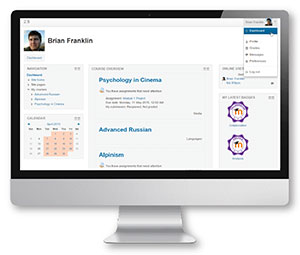Moodle Gets Redesigned Navigation, User Interface Upgrade

Moodle 2.9 dashboard
Moodle has unveiled version 2.9 of the open source learning platform, featuring a navigation and user interface redesign focused on ease of use for students, educators and administrators.
"Our core goal is to support and improve education by making our teachers and trainers more effective, and Moodle continues its evolution in Moodle 2.9 with enhancements for users at all levels" said Martin Dougiamas, Moodle founder and CEO, in a prepared statement. "Working from the navigation overhaul specification with the input of the HQ team and community over the past 12 months, the core interface has seen some solid progress in making Moodle simple and friendlier for educators and students."
Other new features include:
- Introduction of conditional quiz questions and attractive print layout;
- Lesson improvements, including the new completion condition for required time spent;
- New activity results block;
- Course editing improvements including drag and drop images into text editor and section deletion;
- Ability to post to all forums at once;
- Setting a passing grade within an activity at setup; and
- Course enrolment improvements (keyholder, multiple cohort and meta link enrol).
For developers, Moodle 2.9 now supports the use of Javascript Modules and jQuery (which Moodle HQ recommends for all new javascript), and includes the Mustache templating framework.
Available to download free at the Moodle community site, Moodle 2.9 is the last of the major releases for Moodle 2, and will be supported for 18 months. A Moodle 3.0 release is anticipated for later this year.
About the Author
Rhea Kelly is editor in chief for Campus Technology, THE Journal, and Spaces4Learning. She can be reached at [email protected].